Ok, let’s get into some trouble.
 This is a premna microphylla, or is it? That’s what we are calling it in the tropical bonsai world. And, even though I’m not one to buck conventional wisdom, I’m afraid I must (for the new readers, that last sentence is dripping with sarcasm, in fact, there should be a special font for the amount of sarcasm I just expressed. You see, the URL is adamaskwhy.com. It seems that people don’t like it when Adam asks why).
This is a premna microphylla, or is it? That’s what we are calling it in the tropical bonsai world. And, even though I’m not one to buck conventional wisdom, I’m afraid I must (for the new readers, that last sentence is dripping with sarcasm, in fact, there should be a special font for the amount of sarcasm I just expressed. You see, the URL is adamaskwhy.com. It seems that people don’t like it when Adam asks why).
Left side:
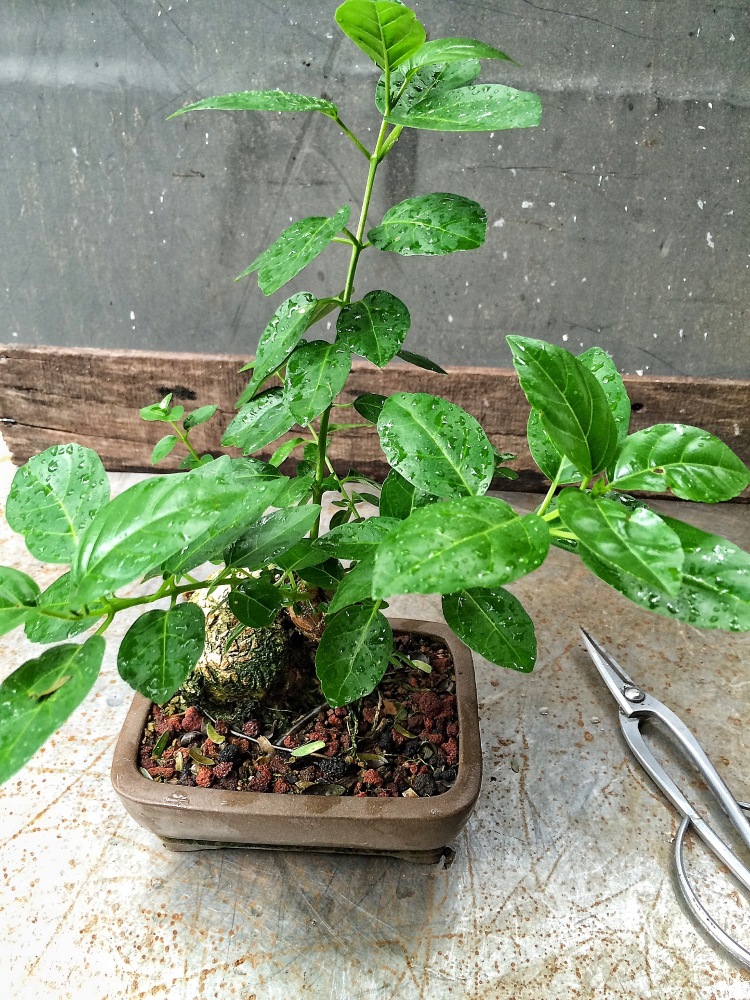 Ok, so it is a premna. What kind? Let me get back to you on that in a bit. I have some more toes to step on. So, dear readers, what tree is a premna microphylla? Easy peasy, that would be the vaunted “musk maple” from Japan.
Ok, so it is a premna. What kind? Let me get back to you on that in a bit. I have some more toes to step on. So, dear readers, what tree is a premna microphylla? Easy peasy, that would be the vaunted “musk maple” from Japan.
“Whoah dude?! You are wrong, that’s premna japonica!” (For some reason I hear that said in Raj’s voice from The Big Bang Theory tv show)
Sorry. Look it up, because you are only 2/3rds correct. The musk maple is premna microphylla var. japonica. (A note to the common name: it’s a translation of the Japanese name which means roughly “stinky maple” because of its, unique, odor, but in English it sounds better to call it “musk maple” because, who’d buy it if you called it “cat piss maple”?).The leaf is serrated, a lot like a maple (it’s not a maple) and it is deciduous too (click this Link to view a pic of the leaf shape on the Lazy S’S Farm Nursery’s website. I’m very leery of stealing pics off the internet nowadays. People are getting insane with the lawsuits, suing bloggers who don’t even make a dime on their blogs (like me) for thousands of dollars. Crazy)
So, we now know that the premna microphylla is a Japanese tree that is deciduous, has a serrated leaf, and often called p. japonica (which, like we said, is mostly correct). So what is the premna that the tropical bonsai world is calling premna microphylla? Ok, are you ready for this? I think it is actually a premna serratifolia. Which means serrated leaf, but what’s funny is that most of the leaves of the species are not serrated (click this link from Kew.org to learn all about it). It was named this by the master namer of all things botanical, Linnaeus. He was given a specimen with slightly serrated leaves I guess. His team dropped the ball that day. From what Robert Stevens says, there are several leaf types of premna used as bonsai in Taiwan and Indonesia. But from what my research has indicated, of the ones he uses for bonsai, none are p. microphylla. All the pictures of p. microphylla not in bonsai sources, are those of the musk maple. The one Robert calls p. Microphylla is the Taiwanese one, which is described in “The Flora of Taiwan” 2nd edition, vol. 4, ph 422, entry 2. Premna microphylla turcz.,…….leaves ovate to oblong 5-7 cm long……margin entire or remotely serrate at front. Which means to me that there needs to be some genetic testing done. The ones in Taiwan sound an awful lot like p. Serratifolia, with its very variable leaf margin. Let me also point out again that the musk maple is deciduous but p. Serratifolia is not and the premna we use in tropical circles are really tropical. To be fair with Robert, he does know about premna serratifolia and uses it. I’m just saying that the leaf shape that is identified as p. Microphylla is in actually a p. Serratifolia.
Ok, now that I’ve annoyed, alienated, confused and bored everyone, you are asking why all that above matters. Right? It’s because bonsai people will not be taken seriously by real horticulturists unless we can get our house in order. And by insisting on calling plants by their wrong names, bonsai people will always be relegated to the back of the bus as “those freaks who torture trees” (much the same way that most artists don’t consider bonsai as an art. I mean, when we have things called “rules” instead of what they are, design principles, and with the perpetual intermediates excommunicating trees because they aren’t “bonsai”, artists just laugh at us). With that said, it’s ficus salicaria, it’s negative space, it’s chloroluceun tortum, it’s perspective, etc…….wait until my book comes out.
Back to the tree. And since I’m totally confused myself, I’m just calling it a premna.
 Jeez, I was just going to make this a simple post on a cool tree. And it’s entirely possible that this was known to be premna serratifolia when it found its way into Florida and I’m just trying to stir the puddin’. Or maybe I don’t know how to convert from the metric system…….I’m waiting for the dna testing.
Jeez, I was just going to make this a simple post on a cool tree. And it’s entirely possible that this was known to be premna serratifolia when it found its way into Florida and I’m just trying to stir the puddin’. Or maybe I don’t know how to convert from the metric system…….I’m waiting for the dna testing.
Anywho, I was given today’s tree by my bud Jason Osborne (from The Ft. Myers area). He is a teacher at Wigert’s nursery down there’bouts. He grew this tree from a cutting and put that genius, initial movement in the trunk. Here’s how it was when I got it. 
Sweet, ain’t it? Hubba hubba! Looking at that leaf size in the above pic, you wouldn’t believe that a leaf could get almost 8 inches long (a grower, not a show-er, I guess…..). It can get that big!
 (No wonder my wife can’t measure, I’ve been telling her that that’s eight inches our whole marriage…….Bazinga! Sorry, you come for the bonsai, but leave for the bad jokes, am I right?). Alright, back to the tree: the goal is to match the top movement with the bottom movement, which means some tricky wiring. First, a partial defoliation on the lower parts of the trunk to make room for the wire.
(No wonder my wife can’t measure, I’ve been telling her that that’s eight inches our whole marriage…….Bazinga! Sorry, you come for the bonsai, but leave for the bad jokes, am I right?). Alright, back to the tree: the goal is to match the top movement with the bottom movement, which means some tricky wiring. First, a partial defoliation on the lower parts of the trunk to make room for the wire.
I’m saving these two branches in case I accidentally break off the two branches I want, in the wiring process.
The reason I say that is because the branches I’d like to use are a bit fragile.
 They look strong but, if you look closely, the callous is growing over the pruning scar.
They look strong but, if you look closely, the callous is growing over the pruning scar.
 And the callous is not totally attached to the wood. I must be very careful in how I place the wire and how I bend the branches. The first decision is where to place the wire, above or below the weak parts.
And the callous is not totally attached to the wood. I must be very careful in how I place the wire and how I bend the branches. The first decision is where to place the wire, above or below the weak parts.

 I’m going to go with the “above” choice because of three reasons. First, I’m bending the right branch forward and down and that will place the wire over the stress point on the outside of the curve.
I’m going to go with the “above” choice because of three reasons. First, I’m bending the right branch forward and down and that will place the wire over the stress point on the outside of the curve.
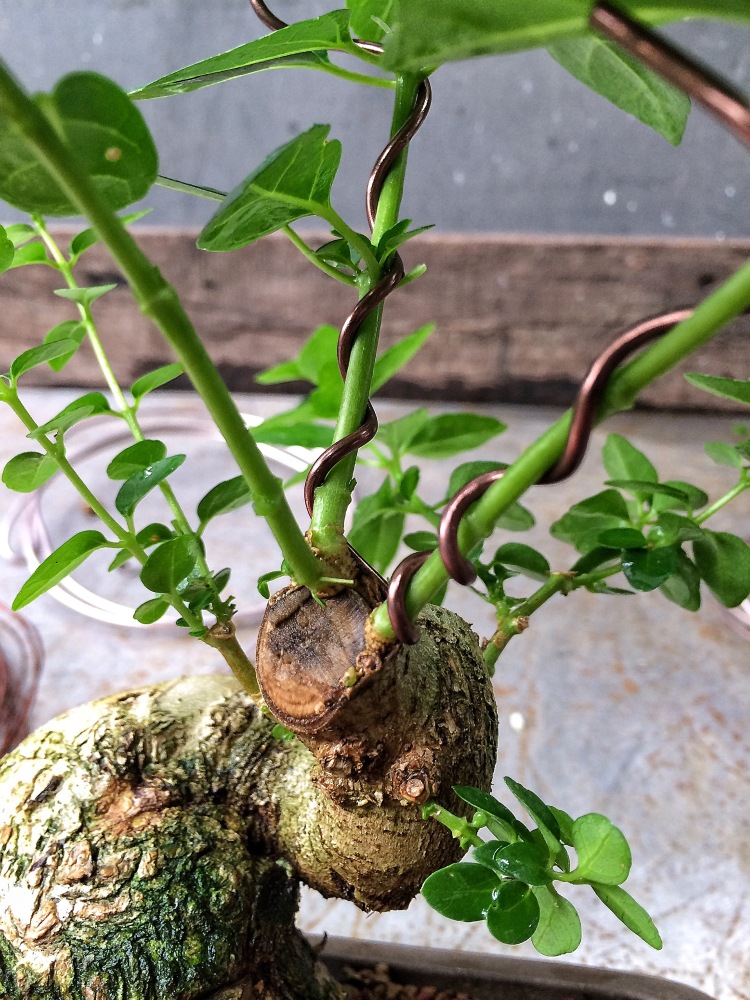 I tend to make my branches go up and then down as opposed to a sharp 45 degree angle right off the trunk. It looks more natural to me. The second reason is because if I put the wire under the callous, it could act as a fulcrum and lift that callous off the wood, slowing or stopping the healing, or even killing the branch. The third reason is because of the left branch. You’ll see that in a second. When bending a green, non lignified branch like this, it is very easy to snap it (think fresh celery or a carrot). So the process is: always, two hands, four fingers on the branch (and the camera goes down of course)
I tend to make my branches go up and then down as opposed to a sharp 45 degree angle right off the trunk. It looks more natural to me. The second reason is because if I put the wire under the callous, it could act as a fulcrum and lift that callous off the wood, slowing or stopping the healing, or even killing the branch. The third reason is because of the left branch. You’ll see that in a second. When bending a green, non lignified branch like this, it is very easy to snap it (think fresh celery or a carrot). So the process is: always, two hands, four fingers on the branch (and the camera goes down of course)
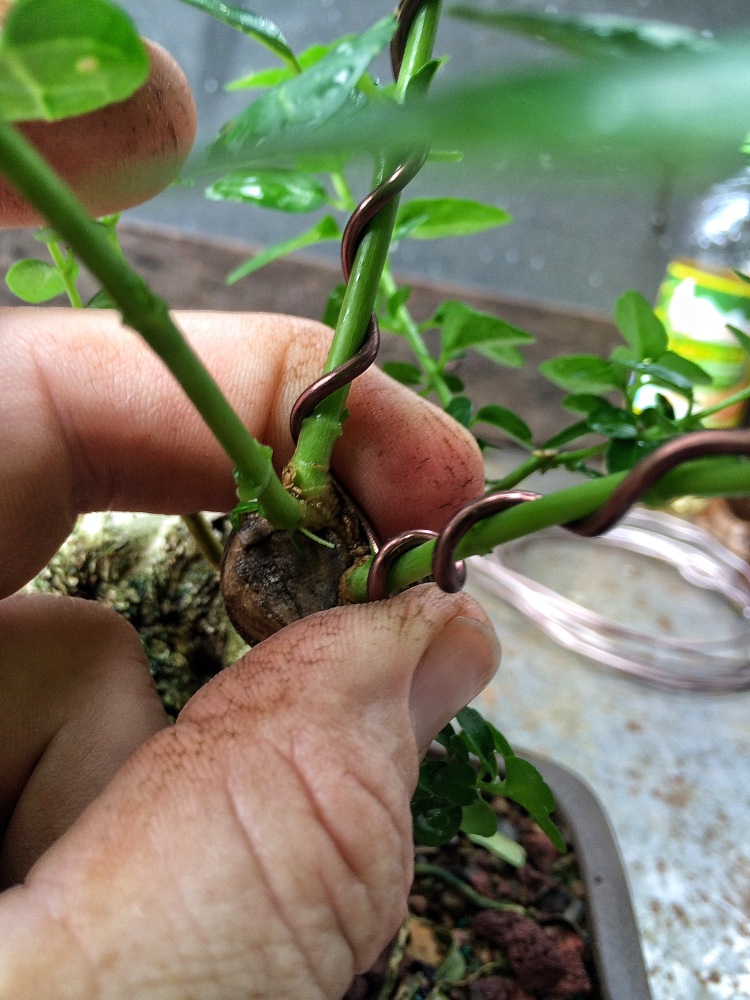 And your face goes within inches so you can see stress cracks and hear possible snaps that might be happening.
And your face goes within inches so you can see stress cracks and hear possible snaps that might be happening.
Here’s the third reason. When applying the second wire, the first wrap enables me to place the second wire thusly…
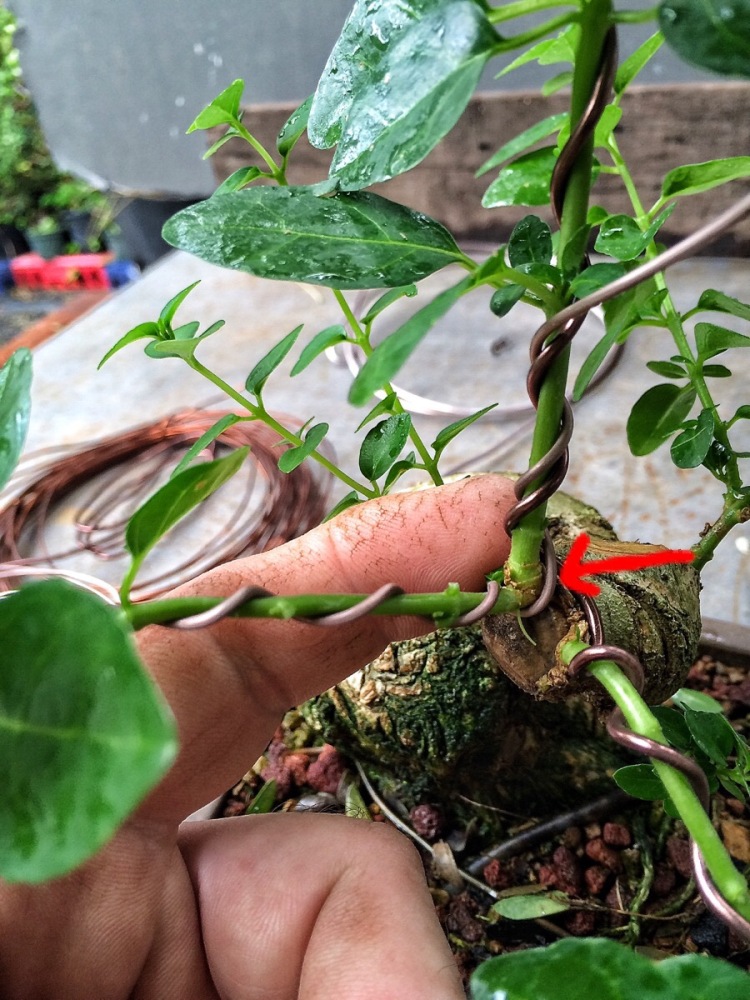 To protect the outside of the bend when this branch gets moved. Again, two hands, four fingers on the branch etc.
To protect the outside of the bend when this branch gets moved. Again, two hands, four fingers on the branch etc.
 So far so good. I can now remove the “extra” branches.
So far so good. I can now remove the “extra” branches.

 And prune back the first two a tad.
And prune back the first two a tad.

 Now, the stressful part. In case you didn’t notice, there are very few branches on this tree.
Now, the stressful part. In case you didn’t notice, there are very few branches on this tree.
The reason for that is because I’ve been pruning off the little, extra shoots that could sap the strength of those needed branches. But it doesn’t give me many fallback branches in case I break something. Why did I proactively prune those extra shoots off? Because this premna will throw out a new shoot from anywhere, and it will grow like crazy, drawing all the energy until the old branch, the one you need, just dies back. It’s good that it backbuds so easily, but you have to watch those vampire buds from sucking the life out your design.
I’ve been putting the bending off, readjusting the wires, making sure the wind is just right and the sun isn’t in my eyes. I’m scared. Hold me….

Always with full contact with the fingers. Forward, up a little, move it it down a bit, no, not a spiral…..
It’s tough to see. Let me remove that leaf.

Looking down on it, from over the left shoulder.
I wired that back branch too.
Here we are before.

And the finish. The money shot. Man, that was a tough trunk to handle. I feel like my mascara is running.
 I think that, overall, that will be the total height. Maybe lower by a bit. Theres always the question of why we might put so much exaggerated movement into a tree. Why not let it grow the way it does in nature? Because bonsai is art, and art can be a naturalistic representation of a tree in the wild, it could be a fantastical “Fairy Tale” tree from Walter Pall, it could be a stylized Taiwanese juniper. Or it could be this tree. It’s going to be a sweet little cutie pie. If it survives the Orlando sub-tropical winter ahead. I hope so. I hope I do too (my next surgery, for those following these things, is late January)
I think that, overall, that will be the total height. Maybe lower by a bit. Theres always the question of why we might put so much exaggerated movement into a tree. Why not let it grow the way it does in nature? Because bonsai is art, and art can be a naturalistic representation of a tree in the wild, it could be a fantastical “Fairy Tale” tree from Walter Pall, it could be a stylized Taiwanese juniper. Or it could be this tree. It’s going to be a sweet little cutie pie. If it survives the Orlando sub-tropical winter ahead. I hope so. I hope I do too (my next surgery, for those following these things, is late January)
The next post should be on the Winter Silhouette Expo in South Carolina this weekend. I have a table with two displays on it. I hope it goes well. I’ll try to publish all the trees, if not I’ll get at least mine, Seth Nelson’s (who is representing the James J. Smith collection) and Rob Kempinski’s (who has been warning me that he hopes Seth and I are not looked at badly for associating with him. His display is going to be off the charts, wait and see!)
We are all driving up there together and it should be fun. Unless we kill each other. See you in a few days!

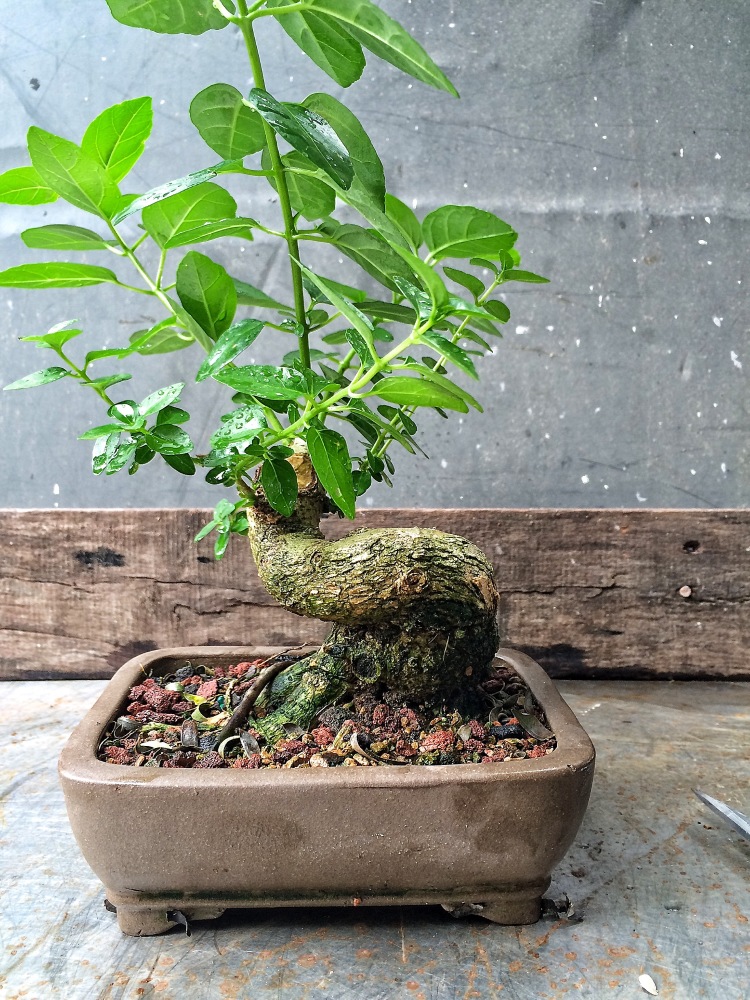


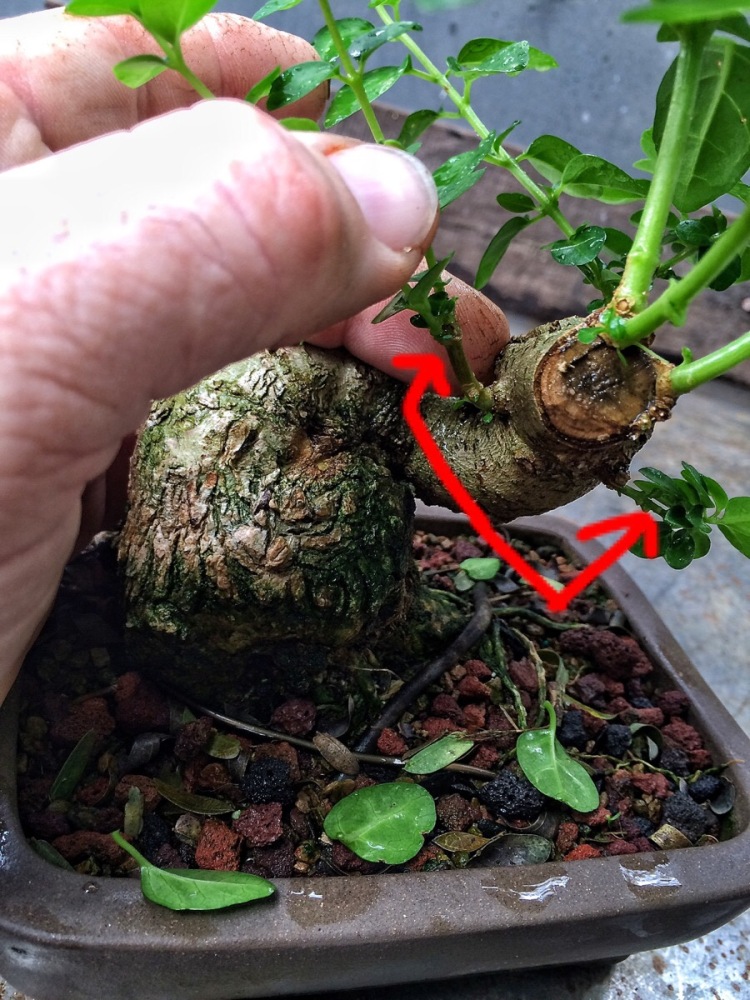



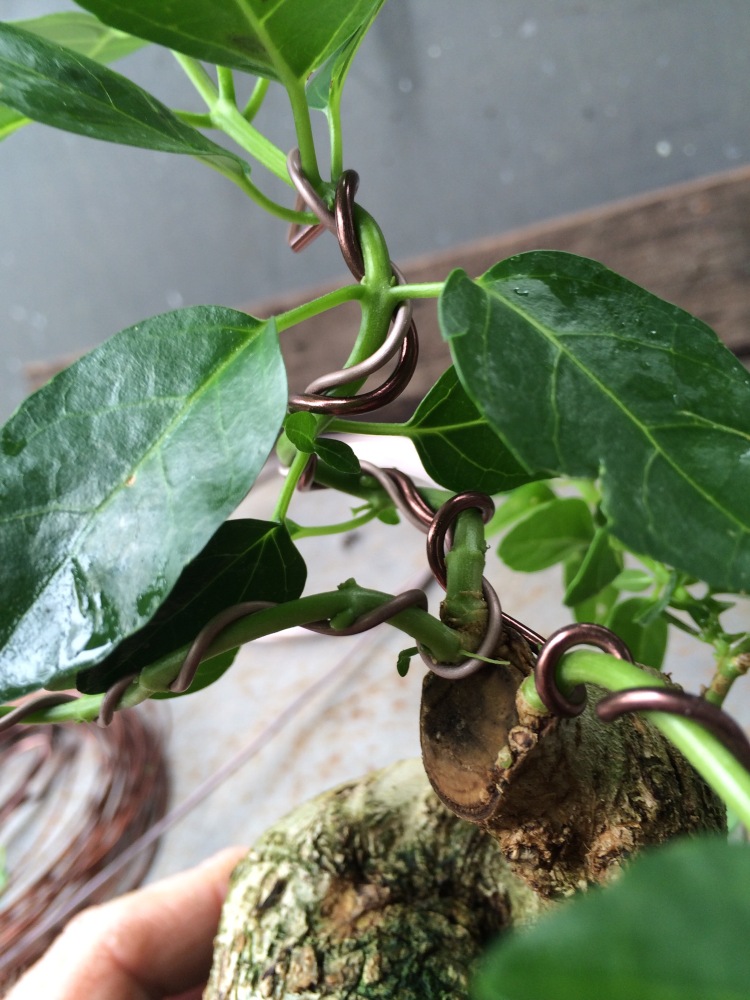


Your stuff is the greatest read there is in the blogosphere! Save me a signed copy of your book that you say you are writing…, 🙂
LikeLike
I want a copy too
LikeLike
How is this little gem progressing? Hoping to get a Premna from Jason at the convention….are they user friendly? Can I treat it like a buttonwood?
LikeLike
Rick: Rob Kempinski is teaching and working on a Premna at our June club meeting, Saturday, June 17, 2017, 1pm, at the Melbourne Public Library on Fee Ave. If you want join us, Rob will bring Premnas to sell for the meeting. Let me know ahead of time so he will bring enough. I’m on FB so please PM me for info. Barb Elliott Hiser.
LikeLike